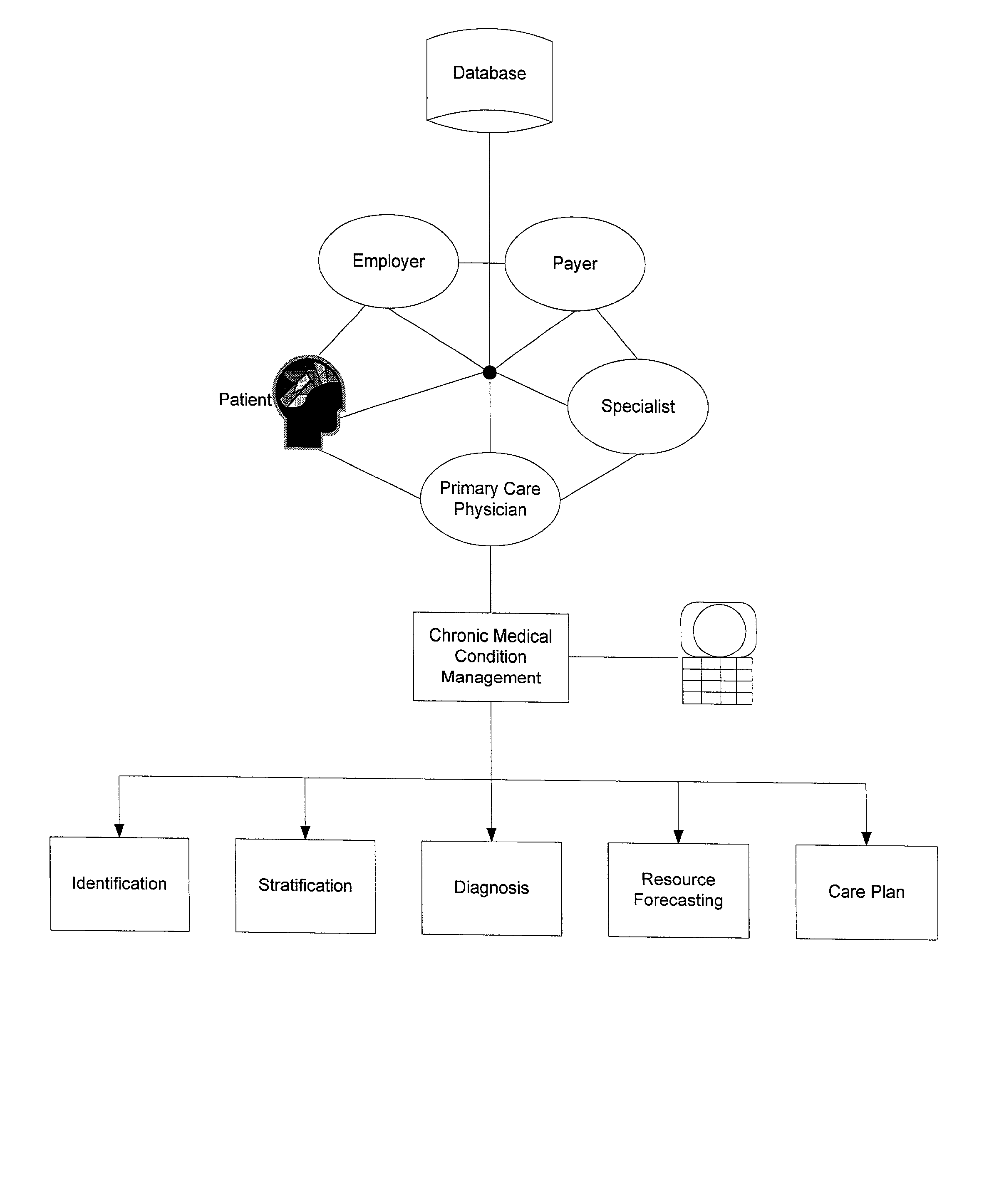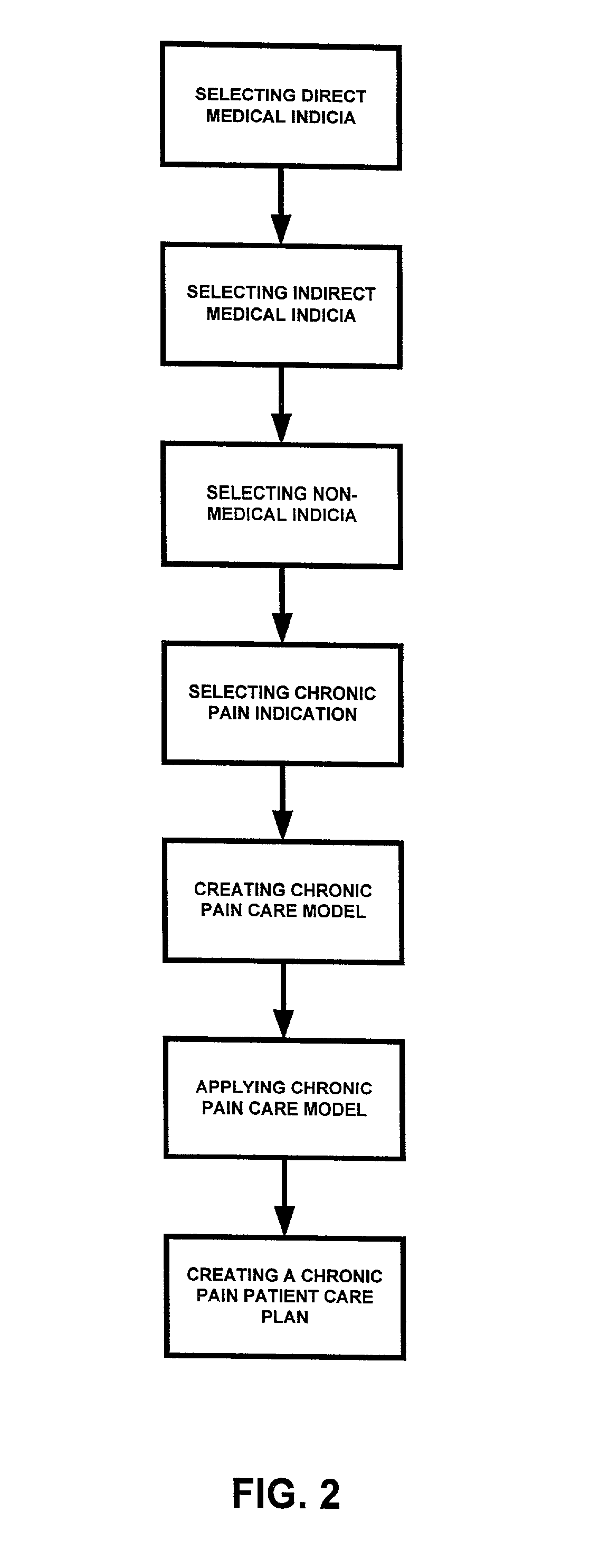Chronic pain patient care plan
a patient care and chronic pain technology, applied in the field of chronic pain patient care plan computer program and method, can solve the problems of increased healthcare expenditure, unfavorable patient care, and increased healthcare costs, and achieve the effect of improving the accuracy of chronic pain patient care plan and reducing the number of errors in the creation of the plan
- Summary
- Abstract
- Description
- Claims
- Application Information
AI Technical Summary
Benefits of technology
Problems solved by technology
Method used
Image
Examples
Embodiment Construction
[0026] FIG. 1 shows a block diagram of a chronic medical condition management system embodiment and some elements of its operating environment. The chronic medical condition management system integrates the requirements and interests of at least five stakeholders include the patient, employer, payer, medical specialist, primary care physician, and the like. Other parties can also be added such as federal government, state government, allied health care professionals such as chiropractors, physical therapists, occupational therapists, and the like. The chronic medical condition management system can operate on data controlled by each stakeholder and on data contained in a common database. The management system can be operated on a variety of computer systems depending upon the complexity of the management system such as a personal computer, minicomputer, mainframe computer, super computer, and the like. The management system can contain one or more components such as a chronic pain p...
PUM
 Login to View More
Login to View More Abstract
Description
Claims
Application Information
 Login to View More
Login to View More - R&D
- Intellectual Property
- Life Sciences
- Materials
- Tech Scout
- Unparalleled Data Quality
- Higher Quality Content
- 60% Fewer Hallucinations
Browse by: Latest US Patents, China's latest patents, Technical Efficacy Thesaurus, Application Domain, Technology Topic, Popular Technical Reports.
© 2025 PatSnap. All rights reserved.Legal|Privacy policy|Modern Slavery Act Transparency Statement|Sitemap|About US| Contact US: help@patsnap.com



